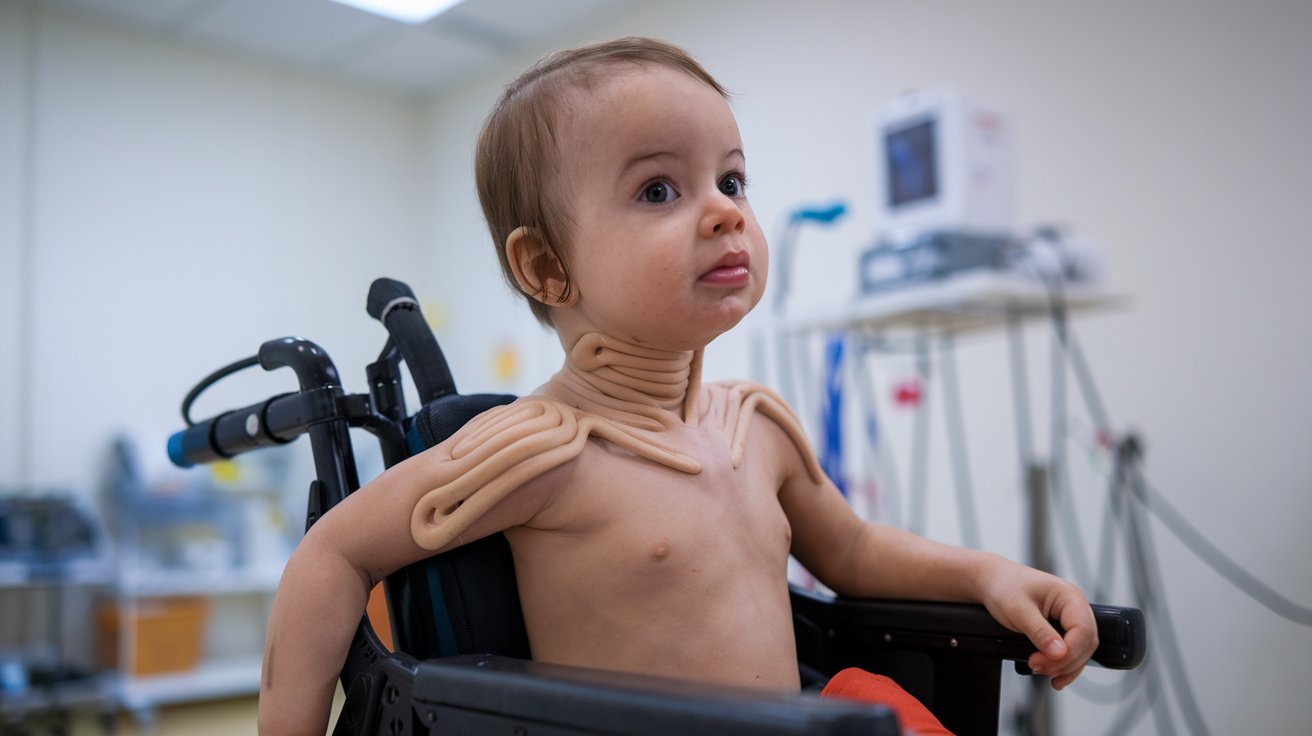
Congenital Benign Spinal Muscular Atrophy Dominant might sound like a mouthful, but understanding it can be quite simple. This condition, often abbreviated as SMA, affects the muscles and nerves, causing weakness from birth. Unlike other forms of SMA, the "benign" type is less severe, allowing many individuals to lead relatively normal lives. Genetics play a crucial role here, as this condition is inherited in a dominant pattern. This means just one copy of the altered gene can cause the disorder. Curious about how this impacts daily life, treatment options, or the latest research? Stick around as we dive into 30 fascinating facts about this unique condition.
Key Takeaways:
- "Congenital Benign Spinal Muscular Atrophy Dominant is a rare genetic disorder causing muscle weakness, but it doesn't get worse over time. With proper care, individuals can lead active lives and have a normal life expectancy."
- "Genetic testing can confirm the diagnosis, and ongoing research is exploring new therapies. Support groups and assistive devices help individuals and families adapt to daily life with this condition."
Understanding Congenital Benign Spinal Muscular Atrophy Dominant
Congenital Benign Spinal Muscular Atrophy Dominant is a rare genetic disorder affecting the spinal cord's motor neurons. This condition leads to muscle weakness and atrophy, but it is considered benign due to its non-progressive nature. Let's dive into some fascinating facts about this condition.
Genetic Basis
The genetic underpinnings of this disorder are crucial for understanding its manifestation.
- Congenital Benign Spinal Muscular Atrophy Dominant is inherited in an autosomal dominant manner. This means only one copy of the mutated gene from either parent can cause the disorder.
- Mutations in the DYNC1H1 gene are often responsible. This gene provides instructions for making a protein involved in cellular transport.
- The condition can be sporadic. Sometimes, it occurs without a family history due to new mutations.
- Genetic testing can confirm the diagnosis. Identifying mutations in the DYNC1H1 gene helps in diagnosing the condition accurately.
Symptoms and Diagnosis
Recognizing the symptoms early can lead to better management of the condition.
- Muscle weakness is a primary symptom. It often affects the muscles closest to the trunk, such as the shoulders and hips.
- Hypotonia, or decreased muscle tone, is common. This can make infants appear "floppy."
- Delayed motor milestones are typical. Children may take longer to sit, crawl, or walk.
- Muscle atrophy, or wasting, occurs over time. This leads to reduced muscle mass and strength.
- Electromyography (EMG) can aid in diagnosis. This test measures the electrical activity of muscles.
- Muscle biopsy might be performed. It helps to examine the muscle tissue under a microscope for abnormalities.
Treatment and Management
While there is no cure, various treatments can help manage symptoms and improve quality of life.
- Physical therapy is essential. It helps maintain muscle strength and flexibility.
- Occupational therapy can assist with daily activities. Therapists work on improving fine motor skills and independence.
- Orthopedic interventions may be necessary. Braces or surgery can help with skeletal deformities.
- Respiratory support might be needed. Some individuals may require assistance with breathing.
- Nutritional support is crucial. Ensuring adequate nutrition helps maintain overall health and muscle function.
- Regular follow-ups with a neurologist are important. Monitoring the condition helps in managing symptoms effectively.
Prognosis and Quality of Life
Understanding the long-term outlook can help families prepare and plan for the future.
- The condition is considered benign. Unlike other forms of spinal muscular atrophy, it does not worsen over time.
- Life expectancy is typically normal. Most individuals with this condition live a full lifespan.
- Quality of life can be good with proper management. Early intervention and ongoing support play a key role.
- Individuals can lead active lives. Many participate in sports and other physical activities with appropriate adaptations.
- Support groups can be beneficial. Connecting with others facing similar challenges provides emotional support and practical advice.
Research and Future Directions
Ongoing research aims to better understand and treat this condition.
- Genetic research is expanding. Scientists are exploring other potential genetic causes and mechanisms.
- New therapies are being investigated. Advances in gene therapy and other treatments hold promise.
- Clinical trials are ongoing. Participation in trials can provide access to cutting-edge treatments.
- Patient registries help track outcomes. Collecting data on individuals with the condition aids research and improves care.
- Advocacy groups raise awareness. Organizations work to support research and provide resources for affected families.
Living with Congenital Benign Spinal Muscular Atrophy Dominant
Daily life with this condition involves adaptations and support.
- Assistive devices can enhance mobility. Wheelchairs, walkers, and other aids help with movement.
- Home modifications may be necessary. Ramps, grab bars, and other changes make living spaces more accessible.
- Educational support is important. Individualized education plans (IEPs) ensure children receive appropriate accommodations.
- Emotional and psychological support is vital. Counseling and support groups help individuals and families cope with the challenges of the condition.
Final Thoughts on Congenital Benign Spinal Muscular Atrophy Dominant
Congenital Benign Spinal Muscular Atrophy Dominant, though rare, presents unique challenges and insights into genetic disorders. Understanding its symptoms, causes, and treatment options can help those affected manage their condition better. Early diagnosis and intervention play a crucial role in improving quality of life. Genetic counseling is essential for families, offering guidance and support.
Research continues to evolve, bringing hope for more effective treatments and possibly a cure. Staying informed and connected with medical professionals and support groups can make a significant difference.
Remember, knowledge is power. By learning more about this condition, we can foster a more inclusive and supportive environment for those living with it. Keep exploring, stay curious, and never hesitate to seek out the latest information and resources available.
Frequently Asked Questions
Was this page helpful?
Our commitment to delivering trustworthy and engaging content is at the heart of what we do. Each fact on our site is contributed by real users like you, bringing a wealth of diverse insights and information. To ensure the highest standards of accuracy and reliability, our dedicated editors meticulously review each submission. This process guarantees that the facts we share are not only fascinating but also credible. Trust in our commitment to quality and authenticity as you explore and learn with us.


